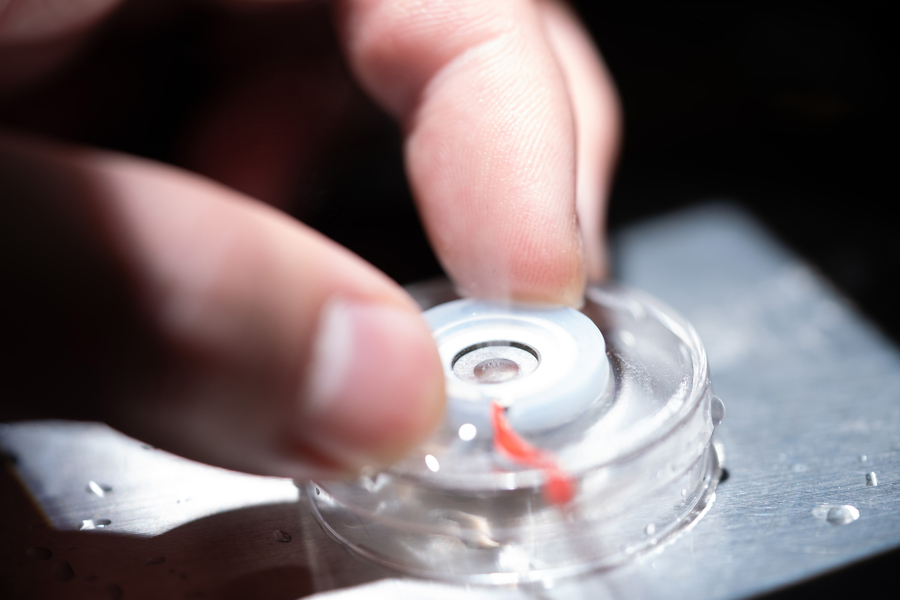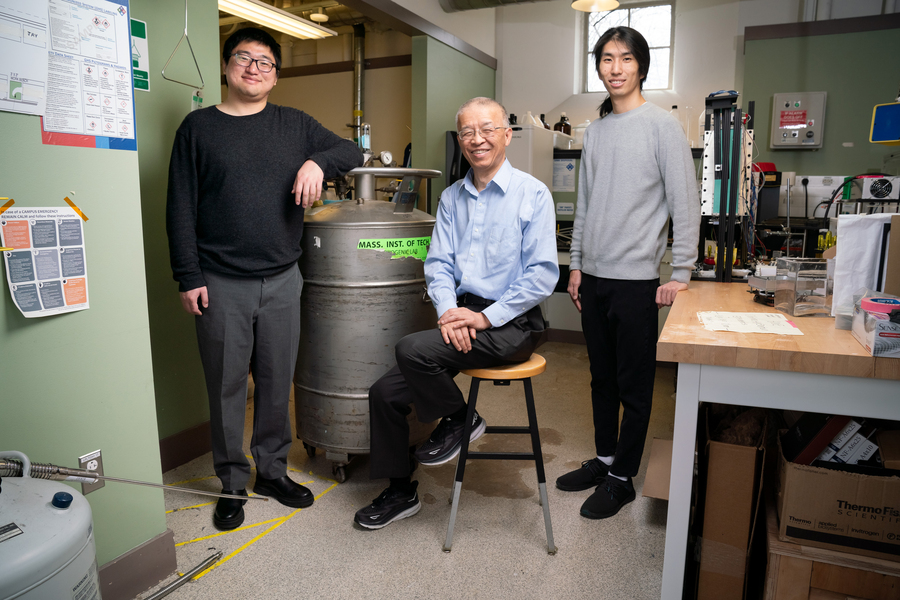Researchers at the Massachusetts Institute of Technology (MIT) have made a discovery that could prompt physics textbooks to be rewritten.
We have always known that heat is needed to evaporate water. However, researchers have found and demonstrated that light alone can also produce this phenomenon. They call it the photomolecular effect.
Coffee Table Science spoke to Gang Chen, a professor of Mechanical Engineering at MIT to know more about the discovery.

Professor Gang Chen at MIT, who coined the termed Photomolecular Effect.
Coffee Table Science: Your team published evidence of photomolecular effect in a paper last year. What prompted you to look for the impact of light on evaporation in the first place?
Gang Chen: In 2014, we used some black materials floating on the water surface to absorb sunlight and efficiently evaporate water. We were interested in using sunlight for water desalination through an evaporation-condensation process. In that work, we only used thermal evaporation: sunlight converts into heat to evaporate water.
In 2018, Professor Guihua Yu’s group from UT Austin reported that when they placed porous hydrogel mixed with black absorbers on the water surface and subjected it to sunlight, they reached evaporation rates exceeding what was possible under the thermal evaporation picture. Later, we started looking at possible mechanisms. We suspected that maybe there were some sort of photon effects.
Although we did observe wavelength dependences of evaporation rate and strange air-side temperature distribution, we could not come up with a physical picture behind the photon effect. It was in 2021 that I came up with the hypothesis of the photomolecular effect and a physical picture of why this could happen.
Subsequent experiments (carried out mainly by my postdoc Yaodong Tu) on hydrogel were consistent with this hypothesis, which was summarized in the paper we published last year. Once we had the physical picture, we also started working on a single air-water interface in 2021, first by Dr. Yaodong Tu and then by Dr. Guangxin Lv. The current paper summarizes these experiments.
Why did you choose the term photomolecular effect to describe this phenomenon?
Through reading literature, I learned that many different groups had observed “super-thermal” evaporation phenomena using different porous materials when they are irradiated by sunlight (we started this direction in 2014, but we did not see “super-thermal” at that time).
I asked what was in common among all these materials, and I believed that the only thing common was these materials were all porous. I started to ask if there is any surface effects at play. I was literally inspired by the photoelectric effect, especially the surface photoelectric effect, in which light comes to a metal surface and knocks out electrons.
We know that Einstein came up with the photon picture to explain the photoelectric effect, previously experimentally observed by Hertz. I hypothesized that light that comes to the water’s surface could knock out water molecular clusters, and I devised a physical mechanism for why this could happen. Such a mechanism has similarities but also differences from the photoelectric effect, and it was natural for me to name it the photomolecular effect in parallel to the photoelectric effect.
What did your experiments show?
We carried out 14 different types of experiments, consistently showing that light can evaporate water in clusters. For example, when we use a green laser to shine on the sample, we know there should be no reaction since neither bulk water nor containers absorb green light, i.e.., there should be no heating effect.
However, we observe that water can heat up, the light bending angle changes with intensity, and the air side actually cools under green light. All of our observations are consistent with the picture that lights directly cleave off water molecular clusters.

The photomolecular effect being demonstrated in the MIT lab.
In your research, you have found that light incident at 45 degrees has the maximum evaporation effect. Why does this happen?
That is a good question. Basically, under the photomolecular effect picture, we need an electrical field perpendicular to the interface. When light comes perpendicular to the interface, the electrical field is parallel to the interface, and hence we observe very little responses (from temperature rise to refraction angle change). When the light comes completely parallel to the interface, the number of photons that intersect the interface for a given power is small. So, the effect must show a maximum at some angle. Our experiments show this happens at 45.

Chen stands with authors Guangxin Lv, on left, and James Zhang. Image credit: MIT
How have scientists reacted to your research? What is the strongest reaction you have received so far?
I have given many talks and challenged others to find where we are wrong. So far, we have not heard strong objections to our experiments. However, we need others to repeat and conduct even better experiments to validate further or even dispute our claims. It is also natural for people not to believe our claims and I did feel resistance in the paper reviewing processes. These are healthy skepticism and good for science.
Your research has helped us better understand clouds. Could you please elaborate on that? How does it impact our calculations about climate change?
Clouds are difficult to measure and model because we usually do not know the exact structures of the clouds. Scientists acknowledge that clouds is one of the most uncertain part of the climate models. In the past, some researchers reported that the measured clouds’ absorptance of solar radiation exceeded what existing theory could predict. Of course, the photomolecular mechanism was unknown to researchers and hence was not included in the absorption simulations.
The photomolecular effect provides an additional absorption channel to solar radiation, especially we found that this effect is strongest at green light, where solar radiation intensity peaks. I feel this mechanism can potentially explain the discrepancy between theory and experiments. Again, this needs to be checked by more simulations and others.
What kind of industrial applications are being attempted with this new research?
Currently, we think desalination and drying could be initial applications. This, again, is at an early stage, and others may come up with new innovations exploiting this effect.
What is the next area of focus for your team?
We are working on further understanding microscopic mechanisms, devising ways to simulate the effect, expanding to other materials, and exploring applications.



1 comment
I see there “light-based” hair dryers now that apparently work.
What about lining a clothes dryer with bright green LEDs and relying on the light rather than heat to dry clothes? Could that work? Could save a lot of energy!